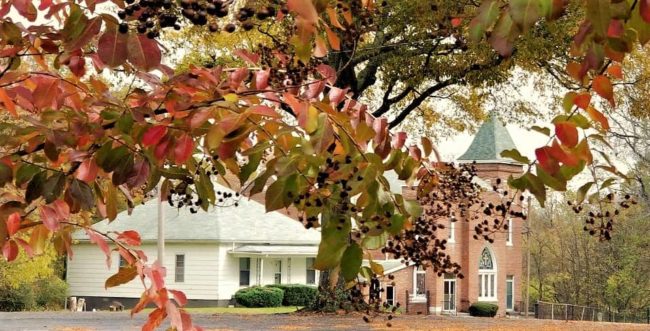
By Shannon McFarlin News Director
Paris, Tenn.–It’s official! Quinn Chapel African Methodist Episcopal Church in Paris has been named to the National Register of Historic Places.
The Quinn Chapel nomination has moved steadily through the required phases, from the Paris Historic Zoning Board to the Tennessee Historical Commission Review Board and has now been approved by the National Park Service.
Quinn Chapel is added to the list of other Paris and Henry County structures which are included on the National Register, including Grove Tower, the White House in Whitehall Circle, Barrs Chapel, the Paris Academy for the Arts, Mt. Zion Church and cemetery, Governor James A. Porter home on Dunlap, the West Paris Historic District (including the JDC Atkins home on Hudson Street), downtown Paris commercial district and North Poplar Street district in Paris.
A contingent of Quinn Chapel members attended the Tennessee Historical Commission meeting in person and Rev. John Dandridge described the group as ‘enthusiastic’ at the prospect of the historic church being added to the National Register. Quinn Chapel’s former pastor, Brother Otto Duncan, was among those in the contingent. All were wearing t-shirts that read, “Rooted in Christ” on the front and “Quinn Chapel Est. 1867″ on the back.
Quinn Chapel was built in 1917 and the parsonage was built circa 1910 and both are located at 216 Church St. The original Quinn Chapel church building was constructed in 1868 and was located at the intersection of Curtis and Draper Streets. Quinn Chapel moved to its current location in 1908.
Current pastor is Rev. John Dandridge submitted research on the history of the church which is included in the nomination papers.
The original church burned down in 1916 and the current church completed in 1917. The church was expanded in the 1960s as the congregation grew. The church is located next to Paris City Cemetery.
According to the narrative in the application, Quinn Chapel holds historical significance in the lives and history of the local African-American community.
According to the Tennessee Historical Commission, Quinn Chapel was eligible for inclusion on the National Register due to the local signficance in the African-American community’s ethnic, social and religious history. It noted after review of the application that it was built for one of the oldest AME congregations in the area and has served as a focal point for significant gatherings and community events over the decades.
The National Register of Historic Places is the official list of the nation’s historic places worthy of preservation. The National Register was created through the National Historic Preservation Act of 1966 and is maintained by the National Park Service.
Among the benefits of being listed: listed properties may qualify for grants, tax deductions for donation of protective
easements, or tax credits for qualified rehabilitation activities.



